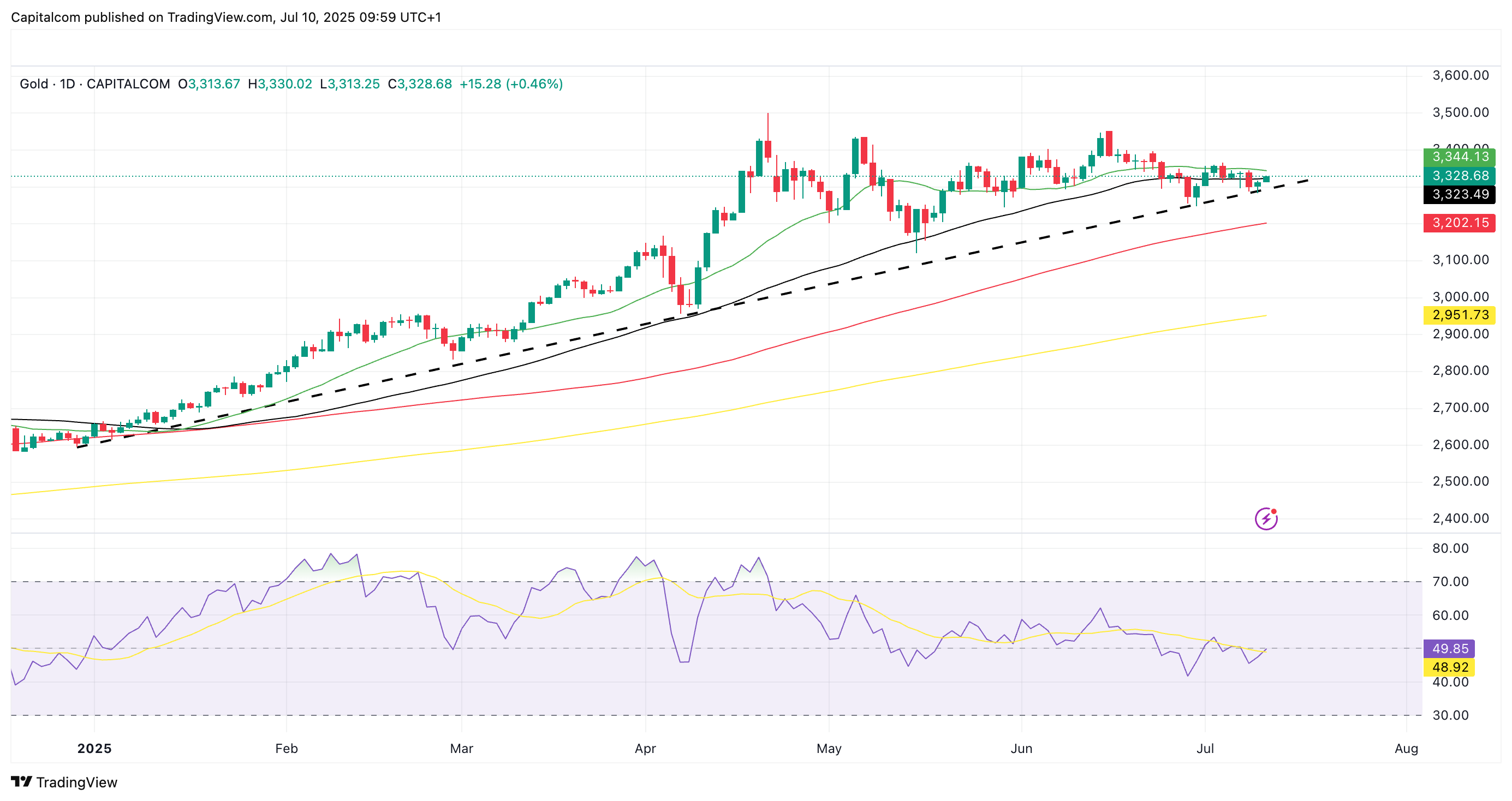Gold’s uncertain path: Correction or buying opportunity?
Gold stays rangebound as positive risk sentiment dominates despite Trump's recent threats
Over the past six months, a notable shift in investment behaviour has taken place. Amid early-year struggles in the U.S. equity market—particularly in the tech sector—many investors sought safety in gold. This move was most visible between mid-February and early April, when U.S. equities, reacting negatively to the return of the Trump administration and the announcement of new tariffs, underperformed. During that time, gold benefitted from its traditional safe-haven status.
However, despite its solid fundamentals, gold’s performance in recent weeks has been underwhelming. Questions have emerged: Why is gold struggling to gain momentum? Why has sentiment turned lukewarm?
Gold remains fundamentally strong. Central bank demand remains robust, and the outlook for interest rates, which are expected to eventually decline, supports the non-yielding metal. Moreover, gold continues to be favoured as a hedge against global instability. Yet, as market sentiment has improved and risk appetite has returned—particularly in U.S. equities—gold has found its upside limited.
Gold (XAU/USD) daily chart
Past performance is not a reliable indicator of future results.
Technically, key psychological levels have become focal points. The $3,500 level has proven to be a resistance zone, capping gains even during recent breakout attempts. Momentum indicators such as the RSI suggest potential for further short-term correction, especially if prices fall below $3,300 and consolidate there. Nonetheless, gold has consistently held above $3,000—a critical floor for many market participants.
From a portfolio strategy standpoint, some investors may now be considering rotating out of gold and back into outperforming U.S. stocks. This makes diversification even more essential. This isn’t about abandoning gold, but rather about balancing exposure across asset classes without overcommitting to one particular segment.
Despite short-term pressures, the long-term outlook remains bullish. The Trump administration’s recent warnings to BRICS nations about circumventing the dollar-based global payment system have likely reinforced efforts to seek alternatives to U.S. dollar dependence. Ironically, such actions may accelerate de-dollarization trends, with gold emerging as a key beneficiary.
Nations like China, which have been steadily increasing their gold reserves, exemplify this movement. With trade surplus countries recycling fewer dollars back into U.S. Treasuries and more into alternative assets—including gold—the metal’s appeal as a store of value continues to grow.
Still, short-term price action deserves close attention. While the trend has maintained higher lows since the start of the year, a new higher high above $3,500 remains elusive. If support around $3,200–$3,250 holds, it may suggest a continuation of the long-term uptrend. However, a decisive breakdown of those levels could indicate a deeper correction is ahead.